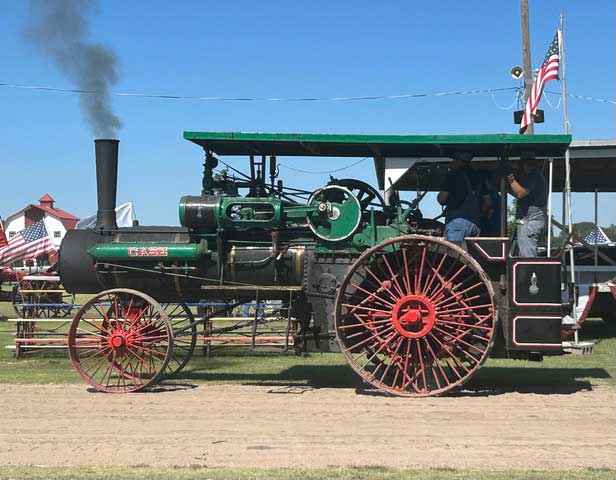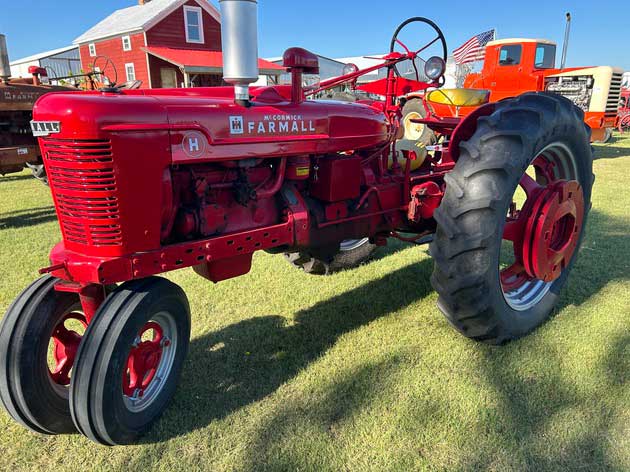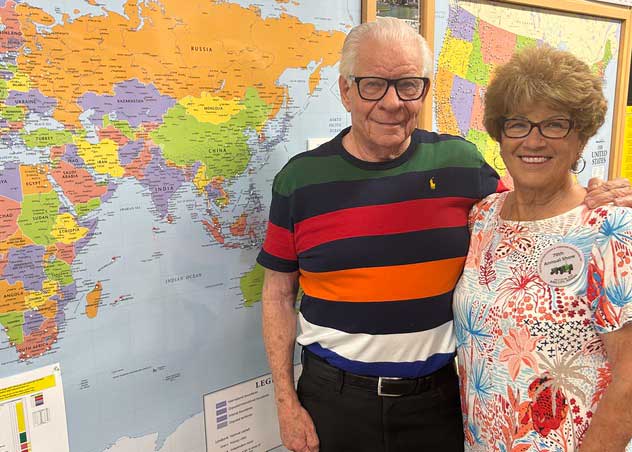September 2023
Vintage Discoveries
Visit to threshers’ show brings back ‘farm memories’
by Ken Weyand
As a farm kid who grew up in the days when farmers were transitioning from horse-drawn equipment to tractors, a part of my brain still remembers when a threshing machine, powered by a steam engine or gas tractor, was a summer highlight on neighboring farms. It was the early 1940s, when horse farming — including steam-powered threshing and silo-filling — was being phased out, and the age of gas-powered tractor farming was well underway.
Two large draft horses lived in our ancient barn that had been built before the Civil War. My dad taught me to drive them, and I was always eager to take the reins. The mare taught herself to unlatch the barn door with her teeth, and the pair occasionally had the run of the barn-lot before my dad and I herded them inside, where they would be harnessed for their day’s work.
In the early 1940s, my dad sold the horses. Along with updated equipment, he bought an International Harvester Farmall Model H, a row-crop tractor that could do farm work much better than the horse team and didn’t have to be harnessed. My feet barely reached the pedals, but occasionally I was allowed to drive it, pulling the wagon forward while my dad and a hired man shucked corn.
A few tractors – and many farm experiences later – I attended the recent 70th annual Tri-State Antique Engine & Threshers’ show at Bird City, KS, and got reacquainted with steam and gas-powered farming that was part of my early years. The three-day show was held on several acres located east of town, with permanent buildings, exhibit areas, and a large parking area.
In addition to a variety of steam and gas-powered machines, there was a Farmall tractor that was a near-twin to the one I drove as a child, along with other tractors that helped farmers transition from horse-farming. Tractor manufacturers included John Deere, Allis-Chalmers, Case, Massey-Harris, Ford, Oliver, and a few others.
For truck and car enthusiasts, a museum on the exhibit grounds houses old cars and pickups. A few old vehicles, including a Ford Model T coupe, also were parked near other buildings.
Show events included sawmill and blacksmith demonstrations, steam engine races, a tractor rodeo, tractor pulls, and a parade. I noted that several of the tractors were driven in the parade by youngsters, some not much older than I had been when I got my first taste of tractor-farming.
There were also plowing and threshing demonstra-tions, kiddie pedal-tractor pulls, a player piano demon-stration, a band concert, and a lot more activities during the three-day event. Several locations provided a choice of food.

Case steam engine
Case steam engine, one of several, was part of a long parade.

International Farmall “H” tractor
International Farmall “H” tractor, very similar to the one on our farm. (Photos by Ken Weyand)
‘Travel Museum’ a surprise attraction
While at the show, I discovered a small building called the “Leach-Hendricks Barn” on the show program.
One of the few air-conditioned buildings on the show grounds, it houses a year-round museum containing much of the life’s work and memorabilia of a Kansas couple, Jim and Cindy Leach, who gave up farming near Bird City in the late 1990s, moved to Wichita, and started a tour company.
Jim planned the itineraries and drove the bus, and Cindy booked hotels, meals and enter-tainment. Since then, they have helped travelers discover 148 countries.
Jim is the author of several books that are available at the museum, which the couple opened in 2020. Also on display are travel maps, with pins showing where they have traveled.
Although they have retired, Jim and Cindy are still able to help travelers discover the world. Jim told me their database contains more than 14,000 customers. To learn more, visit them online at www.jctours.com.
Other attractions on the show grounds include a sawmill, working blacksmith shop, tool museum, print shop, country school house, creamery, authentic sod house, quilt shop, 1886 community church, and a toy museum.

Jim and Cindy Leach
Jim and Cindy Leach and one of the maps in their museum showing their travels. (photos by Ken Weyand)
Ken Weyand is the original owner/publisher of Discover Vintage America, founded in July 1973 under the name of Discover North.
Ken Weyand can be contacted at kweyand1@kc.rr.com Ken is self-publishing a series of non-fiction E-books. Go to www.smashwords.com and enter Ken Weyand in the search box.

